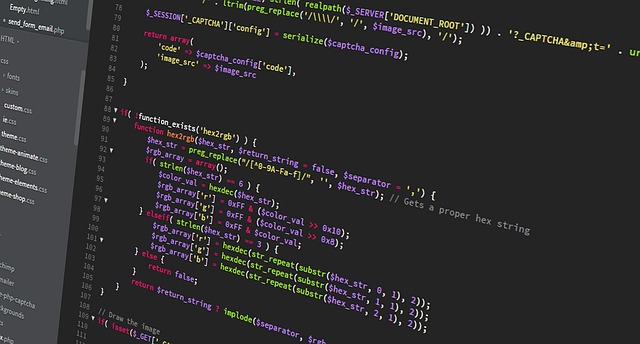Java Object Serialization is a fundamental concept that every software engineer, full-stack developer, and frontend developer should grasp. It's the mechanism that Java provides to convert an object into a byte stream, and vice versa. This byte stream can be saved to a file or sent over a network. Let's delve deep into the intricacies of this process.
This diagram showcases the flow of an object through the serialization and deserialization processes.
Why Use Java Object Serialization?
Serialization plays a pivotal role in various scenarios:
- State Preservation: It allows the state of an object to be saved and restored at a later time.
- Remote Method Invocation (RMI): It's crucial for sending objects between a client and a server during remote method invocations.
- Distributed Systems: In distributed applications, objects might need to be sent over the network, and serialization makes this possible.
The Core of Java Serialization: Serializable Interface
The Serializable interface in Java is a marker interface, meaning it doesn't have any methods. When an object's class implements this interface, it signals the Java Virtual Machine (JVM) that the object can be serialized.
import java.io.Serializable;
public class User implements Serializable {
private String name;
private int age;
// Constructors, getters, setters, and other methods
}Serialization in Action: A Step-by-Step Process
1. Writing Objects to a File
To serialize an object and write it to a file, you'll use ObjectOutputStream. Here's a simple example:
import java.io.FileOutputStream;
import java.io.ObjectOutputStream;
public class SerializeDemo {
public static void main(String[] args) {
User user = new User("John", 30);
try {
FileOutputStream fileOut = new FileOutputStream("user.ser");
ObjectOutputStream out = new ObjectOutputStream(fileOut);
out.writeObject(user);
out.close();
fileOut.close();
} catch (IOException i) {
i.printStackTrace();
}
}
}2. Reading Objects from a File
Deserialization is the process of reading an object from a byte stream. You'll use ObjectInputStream for this:
import java.io.FileInputStream;
import java.io.ObjectInputStream;
public class DeserializeDemo {
public static void main(String[] args) {
User user = null;
try {
FileInputStream fileIn = new FileInputStream("user.ser");
ObjectInputStream in = new ObjectInputStream(fileIn);
user = (User) in.readObject();
in.close();
fileIn.close();
} catch (IOException i) {
i.printStackTrace();
return;
} catch (ClassNotFoundException c) {
System.out.println("User class not found");
c.printStackTrace();
return;
}
System.out.println("Deserialized User:");
System.out.println("Name: " + user.getName());
System.out.println("Age: " + user.getAge());
}
}Advanced Serialization Concepts
Transient Keyword
Not all variables in a class should be serialized. For such cases, Java provides the transient keyword. Any variable marked as transient won't be serialized.
public class User implements Serializable {
private String name;
private transient String password; // This won't be serialized
}Version Control with serialVersionUID
Java uses the serialVersionUID attribute to ensure that a serialized object can be deserialized by a compatible class. It's a unique identifier for serialized classes. If you don't define one, the JVM will generate it, but it's always a good practice to declare it explicitly.
public class User implements Serializable {
private static final long serialVersionUID = 1L;
}Best Practices for Java Object Serialization
1. Always Define serialVersionUID
As previously mentioned, always explicitly define the serialVersionUID in your serializable classes. This ensures version compatibility and avoids potential issues during the deserialization process.
2. Be Cautious with Class Changes
Once a class is serialized, be very cautious about modifying it. Changes can render previously serialized objects incompatible. If you must make changes, understand the implications and test thoroughly.
3. Avoid Serializing Sensitive Data
Never serialize sensitive or confidential information without proper encryption. If a serialized object containing sensitive data is intercepted or accessed, it could lead to security breaches.
4. Validate Objects After Deserialization
Always validate the object after deserialization. This ensures data integrity and can prevent potential security threats.
5. Prefer Composition Over Inheritance
When working with serializable classes, prefer composition over inheritance. This gives you more control over the serialization process and reduces the risk of inadvertently serializing unnecessary data.
Potential Pitfalls and Their Solutions
Inconsistent serialVersionUID
If the serialVersionUID of a serialized object doesn't match the serialVersionUID of the class, a InvalidClassException will be thrown. Always ensure they match, especially after class modifications.
Serialization of Non-serializable Objects
If an object references another object that doesn't implement the Serializable interface, a NotSerializableException will be thrown. Ensure that all objects and their references are serializable.
Handling Large Objects
Serializing very large objects can lead to performance issues or memory overflows. Consider breaking large objects into smaller chunks or using alternative methods like externalization.
Externalization: An Alternative to Serialization
Java provides another mechanism called Externalization, which gives developers more control over the serialization process. By implementing the Externalizable interface, developers can define custom methods (writeExternal and readExternal) to handle the object's serialization and deserialization.
import java.io.*;
public class User implements Externalizable {
private String name;
private int age;
@Override
public void writeExternal(ObjectOutput out) throws IOException {
out.writeObject(name);
out.writeInt(age);
}
@Override
public void readExternal(ObjectInput in) throws IOException, ClassNotFoundException {
name = (String) in.readObject();
age = in.readInt();
}
}Conclusion
Java Object Serialization is an indispensable tool for developers, especially when working with distributed systems, file operations, or network communications. By understanding its core concepts and nuances, developers can harness its power effectively and efficiently.


